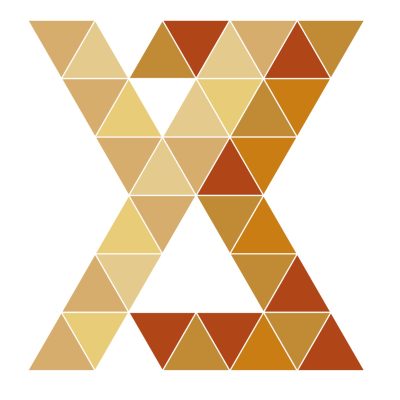While the analysis of the current cross-section of Ukrainian contemporary art, we’ll not be able to avoid the «war».
The first UKRAINIAN CROSS-SECTION Triennial of Ukrainian Contemporary Art (2010) was an attempt of self-identification; the second Triennial (2013) was important as a process of introspection.
While the inspection of the current cross-section of Ukrainian contemporary art, its components, details, fragments (which in previous projects looked like the result of an adequate «cross-section»), we can conclude that now they are rather the result of an «explosion».
That explosion is the catalyst, radicalizing the research level in transformational processes which are taking place in contemporary art of Ukraine.
We have to look, think, perceive, analyse changes in our life and current processes other ways.
We are accompanied by anxiety, weakness, hatred, migration, trauma, self-identity, catalyzing-fermentation process, transmission, dialogue, negotiation, compromise, paradox, aberration, ugliness, uncertainty.
The processes of rethinking, reappraisal, polar shifting are in progress – it’s the re-CREATION.
SEARCHING FOR THE SUBSTANCE
BOHDAN SHUMYLOVYCH
Instead of an intro
This article was written following the two events characteristic (to my mind) of the Ukrainian art life. In November of 2015, my colleagues and I congratulated Sergiy Petlyuk (an Ivano-Frankivsk artist working in Lviv) for winning the first prize at the contest held in the UK by the newly created Firtash Foundation1. It was the third time that this institution organized an art project at the Saatchi Gallery, an exhibition pompously titled UK/Raine. Days of Ukraine in the UK, to promote Ukrainian art and culture abroad. The independent (as usual) committee were Johnson Chang (a co-founder of the Asia Art Archive), Nigel Hurst (Saatchi Gallery CEO), Nick Mitzevich (Director of the Art Gallery of South Australia), Olga Sviblova (founder of the Multimedia Art Museum, Moscow), Prof. Dr. Apinan Poshyananda (Permanent Secretary at the Ministry of Culture, Thailand), and Oleksandr Soloviov (Ukrainian author and curator). Those famous and even powerful people chose to award Sergiy with 20,000 British Pounds. I hope he’ll use the money to create new media pieces and even have something left to finally fix his apartment. His winning installation was Limit of Comprehension, it explores the interaction between human psychology and the physiology of urban space, mixes collective feelings with individual empathy. Read more
UKRAINIAN ART OF PERFORMANCE. BRIEF OVERVIEW
Yaryna Shumska
In 1917 in Kyiv, Atanol Petrytsky painted his face with all the colors of the rainbow. Davyd Burluk showed in public with his forehead and cheeks covered in zoomorphic drawings. Body art will become flavor of the day in 1960s, although nobody will try to trace it back to the practices of Ukrainian futurists. And what’s the point if certain forms, ideas and artistic insights pop up here and there, all around the globe, forming regular patterns of phenomena specific and unique for each particular place.
In the early 1970s, Lviv found itself on the crossroad of information flows. Polish literature was available there; the Druzhba bookstore opened its doors; Polish radio shows were available; sensible was the very presence of the neighbors living on the other side of the iron curtain. The situation provoked the search for new forms, but there was no such thing as clear understanding of what those new forms should be. No university featured courses on installation, land art, let alone performance – such courses were simply impossible. Thus, artists mentored and curated each other. Volodymyr Kaufman recalls that «people simply found corridors for themselves to broaden their thinking and highlight their artistic statements.» Read more
